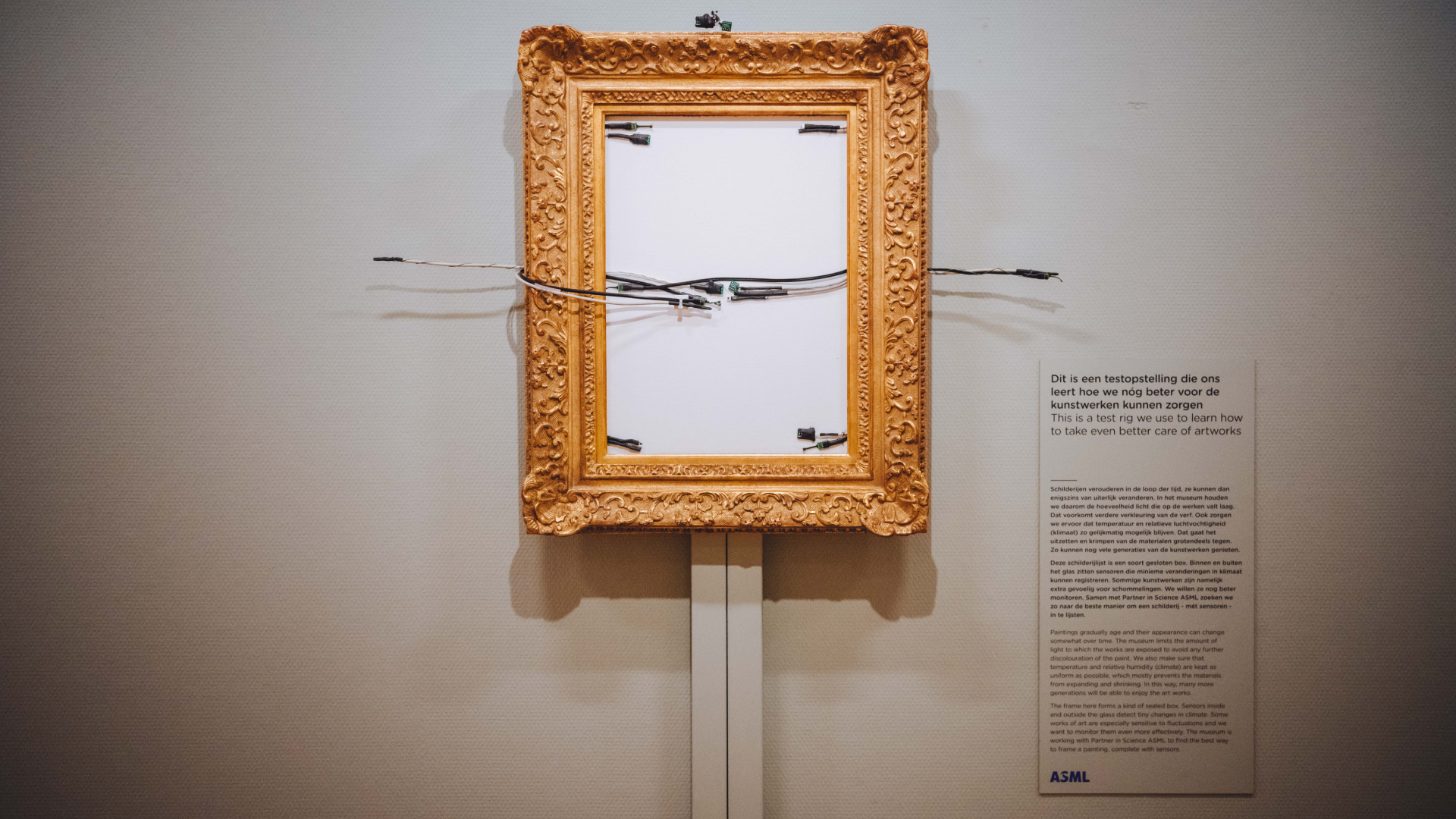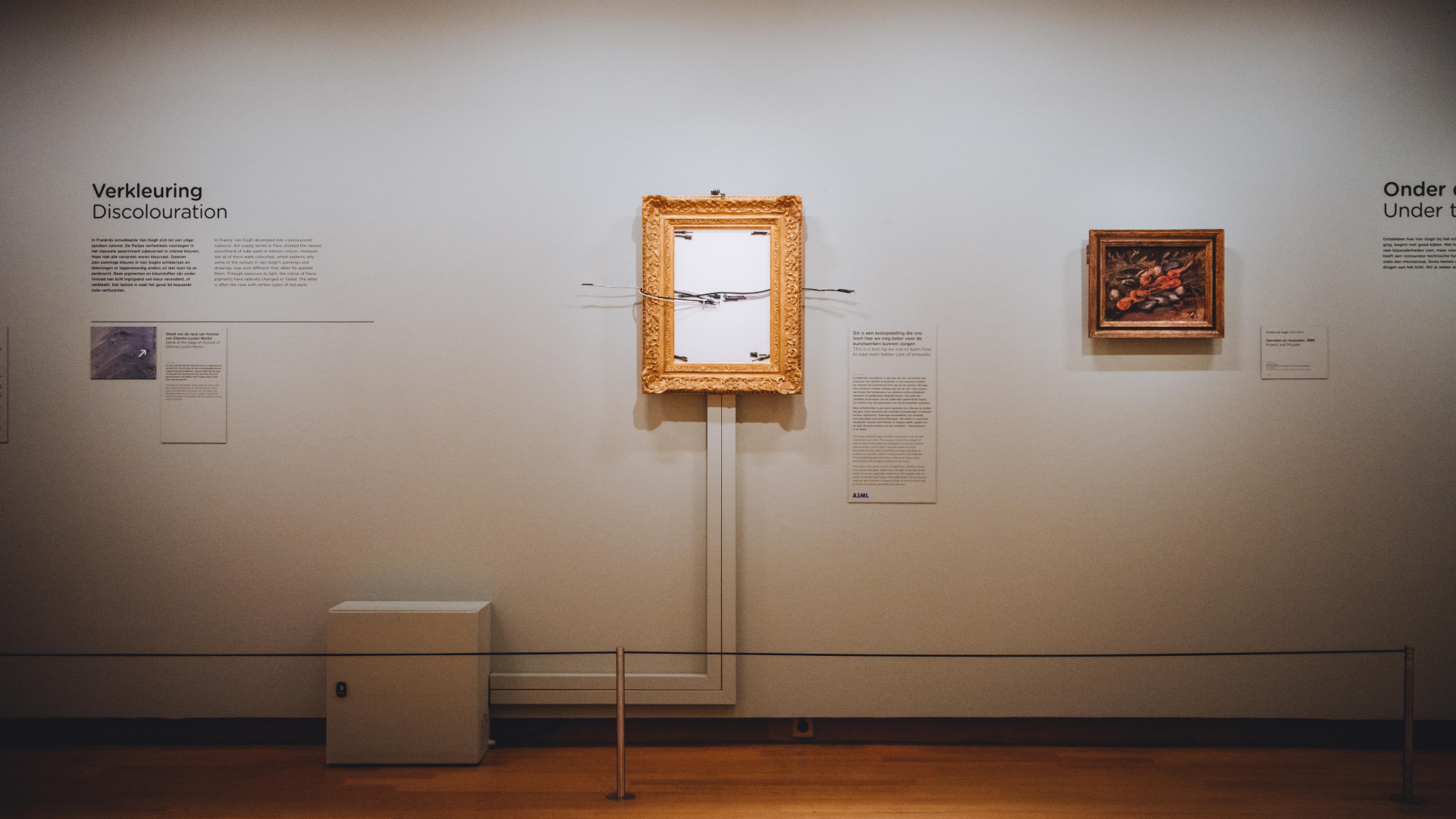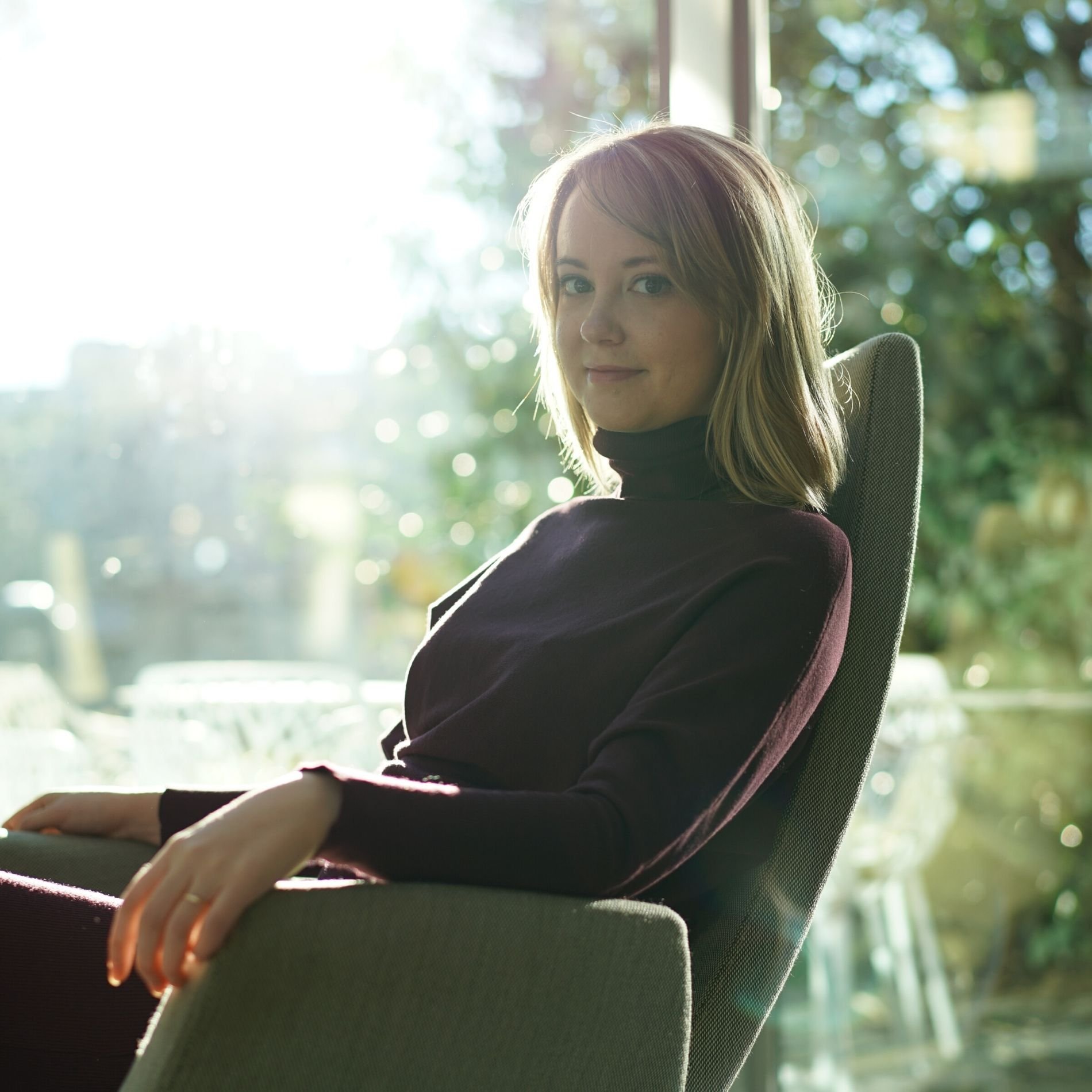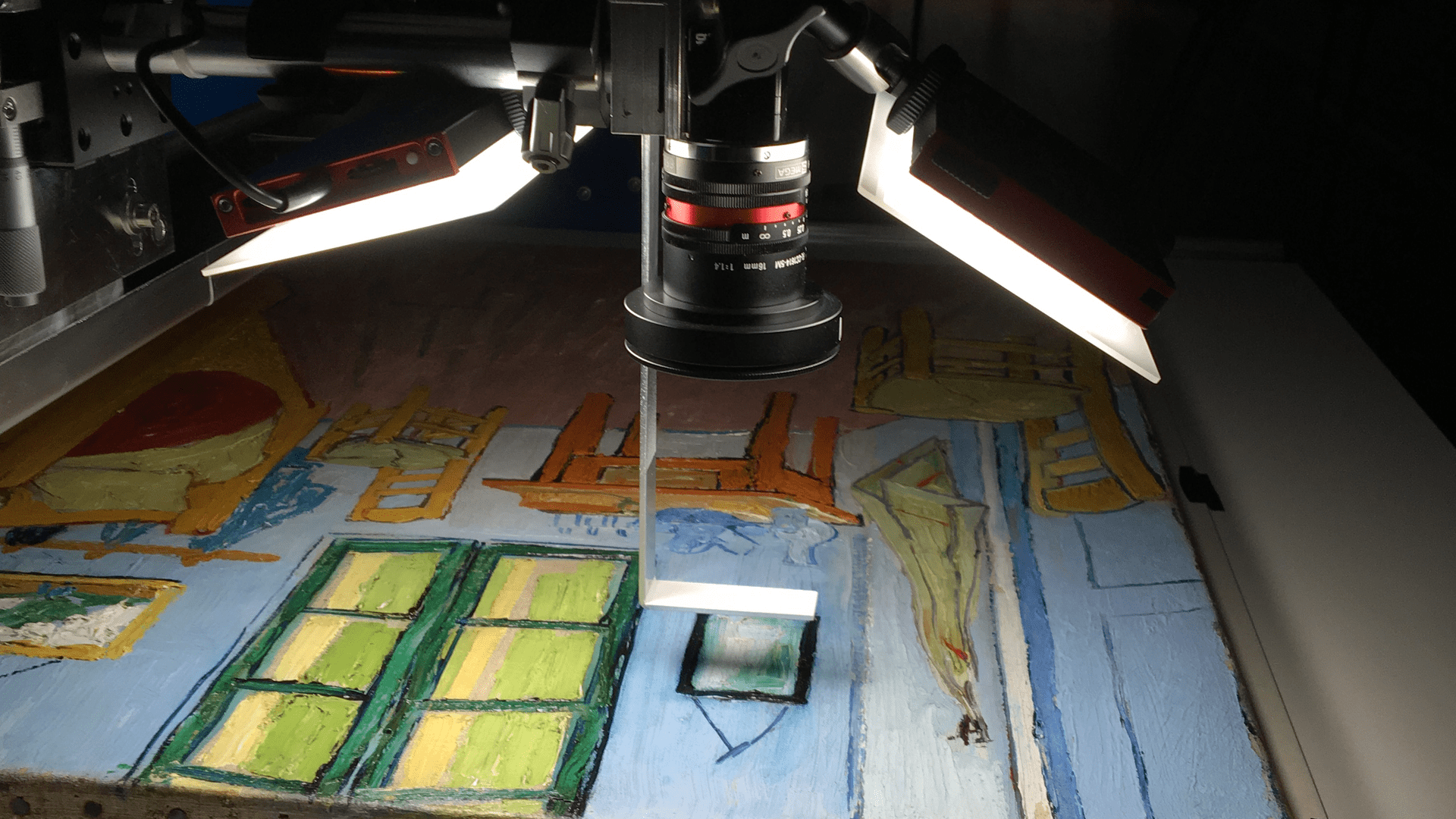3-minute read - by Kate Brunton, November 6, 2022
Several months ago, a team of ASML researchers working together with the Van Gogh Museum’s conservation studio installed a ‘dummy frame’ containing sensors that monitor changes in the environment surrounding the famous artist’s paintings. Using data from the frame, the team will help to create a prototype product to support the preservation of Van Gogh’s masterpieces.
Visitors to the Van Gogh Museum in Amsterdam will likely be surprised to see an empty frame crisscrossed by wires hanging amid the beautiful paintings. Installed in December 2021, this technological contraption is the latest development in ASML’s ongoing partnership with the Van Gogh Museum that draws on science and technology to help preserve Van Gogh’s legacy.
Together with the Van Gogh Museum’s conservation studio, the University of Amsterdam and the Cultural Heritage Agency of the Netherlands (Rijksdienst voor het Cultureel Erfgoed), ASML engineers are trying to determine the best way to monitor Van Gogh’s paintings so that degradation can be minimized and the masterpieces can be enjoyed for generations to come. The team installed a ‘dummy frame’ containing more than 30 sensors that monitor temperature, humidity and light intensity inside and outside the frame. Data from the sensors is collected and can be analyzed on the researchers’ laptops.

One of a kind
“What’s unique about our setup is that it measures at different positions within the frame and just outside it,” says Maaike van t Westeinde, the ASML technical project manager who took over the project from Marijke Scotuzzi in December. “The Van Gogh Museum already has sensors that measure temperature and humidity, but this setup measures closer to the painting to see what’s going on in the mini-environment surrounding the painting.”
Jos Deurloo, ASML system architect, elaborates: “Measuring temperature and humidity on the painting is what's interesting, because visitors create changes in the environment of the gallery. For example, people crowding together in a corner to look at a famous painting will create higher humidity, which we then can report.”
The frame was installed during a COVID-19 lockdown, which coincidentally gave the team a chance to collect a measurement baseline without visitors in the exhibit. “We could very clearly see the difference between when there were visitors and when there were no visitors,” explains Jos. “We saw that reflected in increased day-night fluctuations of temperatures and humidity values.”
The Van Gogh Museum already controls light in the exhibit environment. “We completely block UV light, because that's very harmful for paint, and we also have very low light levels,” says Kees van den Meiracker, head of collection care and conservation at the Van Gogh Museum. “However, we sometimes need to transport paintings to other locations, so measuring light conditions becomes more relevant then.”

Thinking outside the frame
ASML’s competence in electronic engineering, materials science and metrology have been instrumental in the project so far. However, the dummy frame isn’t the only project in our collaboration with the museum. Marijke Scotuzzi explains: “We are also trying to build a ‘digital twin’ of a painting using machine learning techniques, which is a competency that's relatively new to ASML, so we are taking the opportunity to gain more expertise in that field.”
The ASML team has also learned a lot from our collaboration with the museum. “The way they handle their paintings is really nice to see,” says Jos. “I was really impressed by the museum’s safety standards. They looked at every possible risk – the heritage that is hanging there is irreplaceable, so the price they would pay for even the smallest risk is extremely high.” The museum’s approach also made a positive impression on Elina Mitraka, an ASML engineer and surface chemistry expert in the project. “They were very careful to consider and discuss things first, also treating the dummy frame with extreme precision and care.”

Next steps
Using data from the dummy frame, the team will help to create a prototype product. “Our observations from the gallery have already been able to give us insight into what kind of sensors need to be included and where in the product,” explains Johan Reinink, an ASML researcher in the project. “By starting broad, we can slim down to what we really need in order to be effective so that we can create a design that is unnoticeable but will still measure at the right locations.”
The product may also measure other environmental factors, such as vibrations. The team hopes to be able to use the technology for educational purposes as well.
High tech meets art
“Early on in the project, I saw the simulations that have been done on Van Gogh’s paintings to reimagine what the original colors looked like,” says Jos. “What a difference. Van Gogh’s colors are already very bright and expressive, but they are fading and changing much more than I thought.”
“It’s nice to see that our experience in high tech can be helpful for the world of art,” says Marijke. “Van Gogh is part of Dutch heritage, and we feel it is meaningful to be able to help preserve his work.”
Read more about ASML’s partnership with Van Gogh Brabant and the Van Gogh Museum.





